Mint of Polands domed solar system coin series voyages out to the enigmatic Red Planet
The second of our exclusive looks at the Mint of Poland and Pela-Coins latest releases, following the excellent Nummulites Evolution of Earth debut yesterday. Like that coin, this third launch in the domed Solar System series is running at the top of its genre and continues on with a series that has impressed since it debuted The Moon a couple of years ago, following up with the gilded Mercury last year.
When the series first debuted, domed strikes were still relatively rare as they’re actually quite difficult to strike correctly. Times move on and now the format is more common, although still limited to a small number of mints worldwide. The format, (an ounce of fine silver, domed, issued for Niue, embedded meteorite fragment) remains the same as it always has, but this series stands out due to the clever change in finish. The bleak and desolute moon was represented by an antique finish in 2015. Intensely hot Mercury was brought to life with gilding last year. For the Red Planet, the honours are being done by a plating of copper, perfect for the subject, although it’s been used before by CIT for a 2009 Cook Islands coin, one that now fetches serious money on the aftermarket.
The design of Solar System Mars is very cool, a representation of the incredible Valles Marineris taking centre stage. This Martian feature is a large canyon a staggering 4,000 km in length and up to 7 km deep. By comparison, the Grand Canyon is just 446 km long and 2 km deep. The fragment of meteorite NWA 7397 is placed in the centre of it. The rest of this face and the obverse is a craggy look at the Martian surface, both sides recieving copper applications.
As before, inscriptions are neatly integrated, even recieving a copper finish, and are limited to the coin title on the reverse. The Queens effigy and the rest of the inscriptions you would expect are equally well placed on the obverse. The coin comes in a good quality wooden box with a certificate of authenticity. We have the moon coin here and can attest to the quality of that, so we think this one will be a great addition to a fine series. It should be available to pre order very shortly, shipping late in May. Mintage remains at the weird 686 pieces. Despite the abundant competition in the astronomy coin field, this remains a top-tier choice and remains a relatively affordable one.
2017 SOLAR SYSTEM: MARS DOMED SILVER COIN
MARS is the second-smallest planet in the Solar System after Mercury and is the fourth farthest away from the Sun. Named after the Roman god of war, it gets its nickname, ‘The Red Planet’ due to its colour, brought about by the presence of iron oxide.
The surface topography is much like an amalgamation of Earth and lunar features, having valleys, deserts, and polar ice caps like the former and plenty of impact craters like the latter. The rotational period and seasonal cycles of Mars are likewise similar to those of Earth, as is the tilt that produces the seasons. Mars is the site of Olympus Mons, the largest volcano and second-highest known mountain in the Solar System, and of Valles Marineris, one of the largest canyons in the Solar System. The smooth Borealis basin in the northern hemisphere covers 40% of the planet and may be a giant impact feature. Mars has two moons, Phobos and Deimos, which are small and irregularly shaped. These may be captured asteroids, similar to 5261 Eureka, a Mars trojan.
Liquid water cannot exist on the surface of Mars due to low atmospheric pressure, which is about 0.6% that of the Earth’s, although the two polar ice caps appear to be made largely of water. The volume of water ice in the south polar ice cap, if melted, would be sufficient to cover the entire planetary surface to a depth of 11 meters.
Mars is approximately half the diameter of Earth with a surface area only slightly less than the total area of Earth’s dry land. The planet is less dense than Earth, having about 15% of Earth’s volume and 11% of Earth’s mass, resulting in about 38% of Earth’s surface gravity.
PACKAGING AND DOMED OBVERSE
Meteorite NWA 7397, or at least a fragment of it, adorns this new domed coin. Martian meteorites are extremely rare, less than 150 kg have ever been found, and as a result are highly sought after. They’re the result of an asteroid impact on the Martian surface ejecting material into space. This material can enter an earth-intersecting orbit and impact the planet.
NWA 7397 means it’s the 7,397th meteorite to be found in the North West African region. This one was found in early 2012 near Smara in Morocco and weighed 2,130 grams. It’s composed of large salmon-coloured pyroxene oikocrysts. An oikocryst is a crystal containing smaller crystals of other minerals, in the case of NWA 7397 they are olivine and chromite.
Because of their rarity, values are high. A 0.6 kg piece was expected to fetch $160,000 at auction a while ago. It’s important to remember that the fragments attached to meteorite coins aren’t just small adornments, but important, fascinating items in their own right.
| NAME | 2017 SOLAR SYSTEM MARS |
| DENOMINATION | $1 New Zealand |
| COMPOSITION | 0.999 silver |
| WEIGHT | 31.1 grams |
| DIAMETER | 38.61 mm |
| FINISH | Copper-plated |
| MODIFICATIONS | Domed strike, inset meteorite fragment |
| MINTAGE | 686 |
| BOX / COA | Yes / Yes |


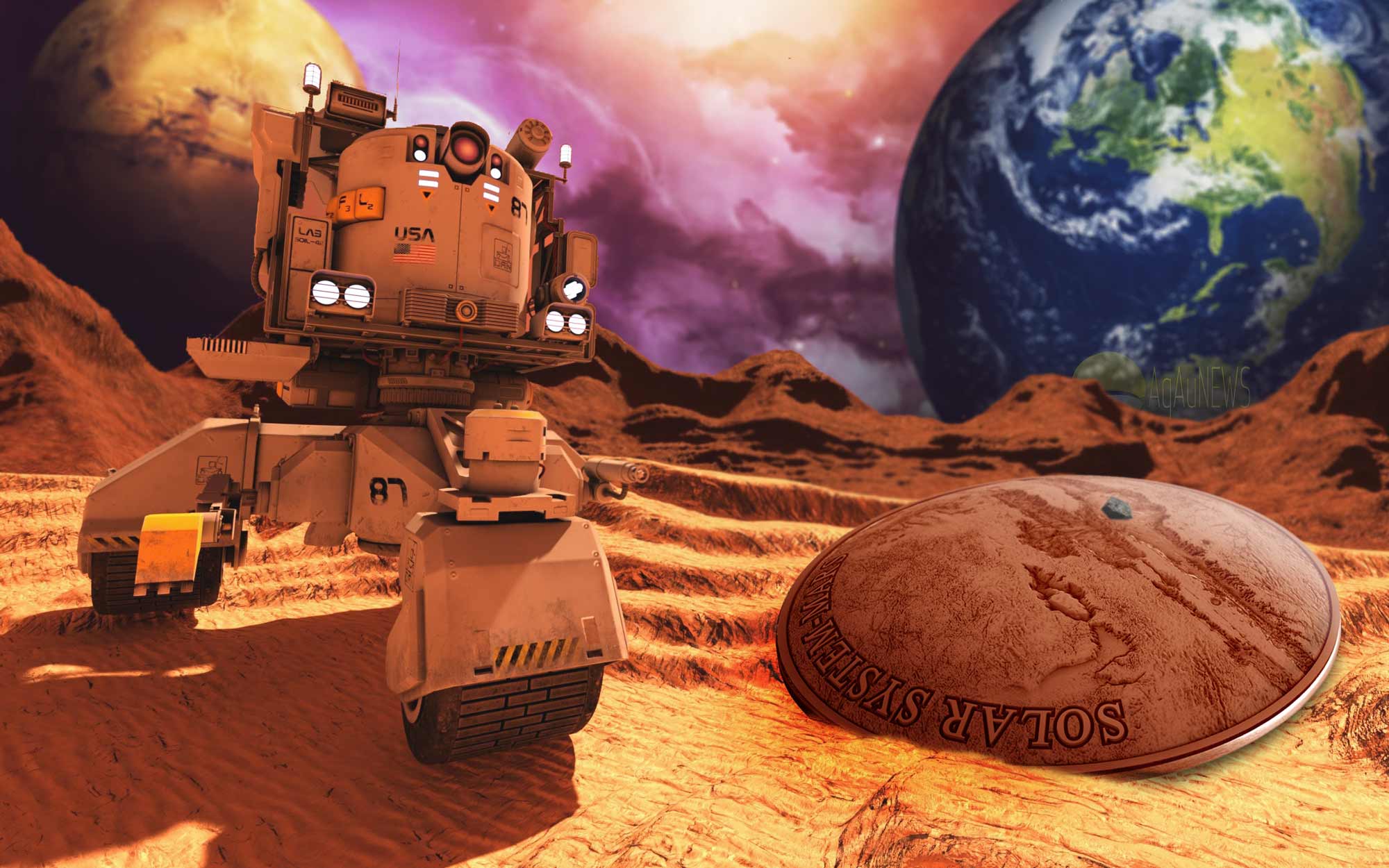
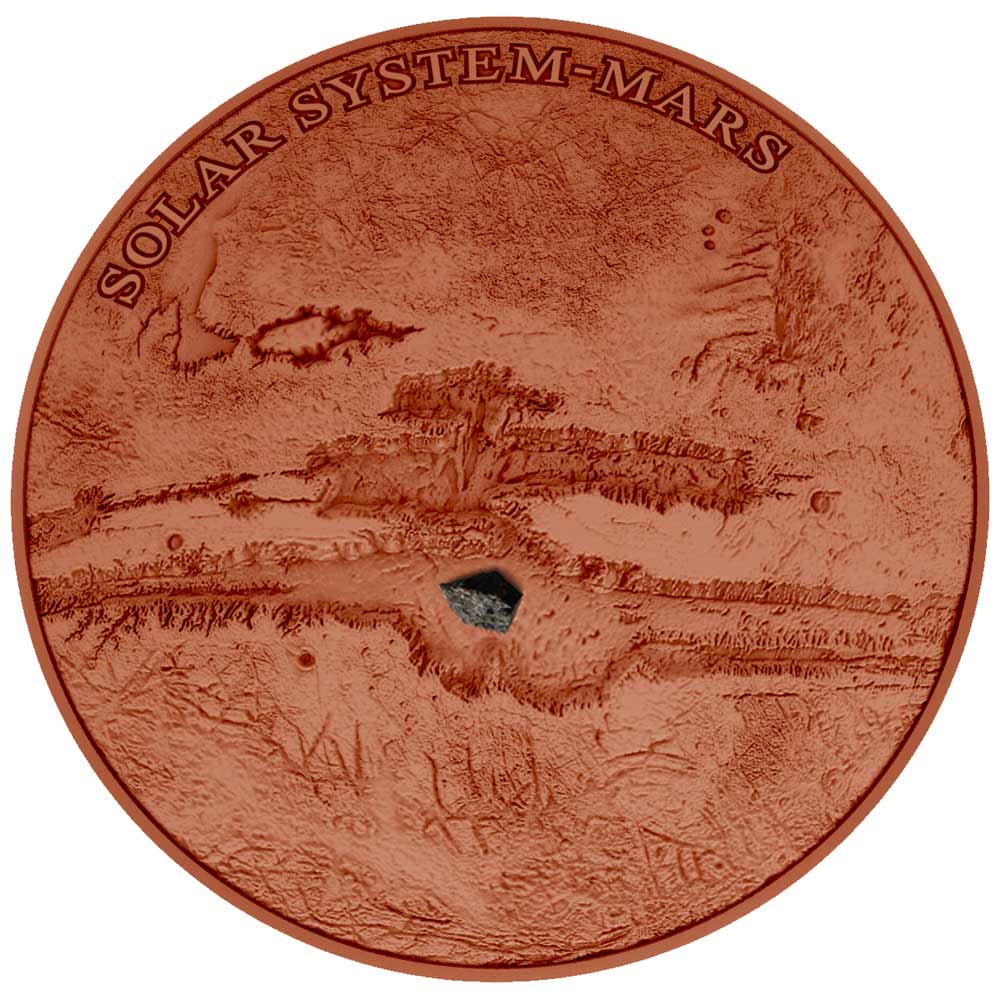
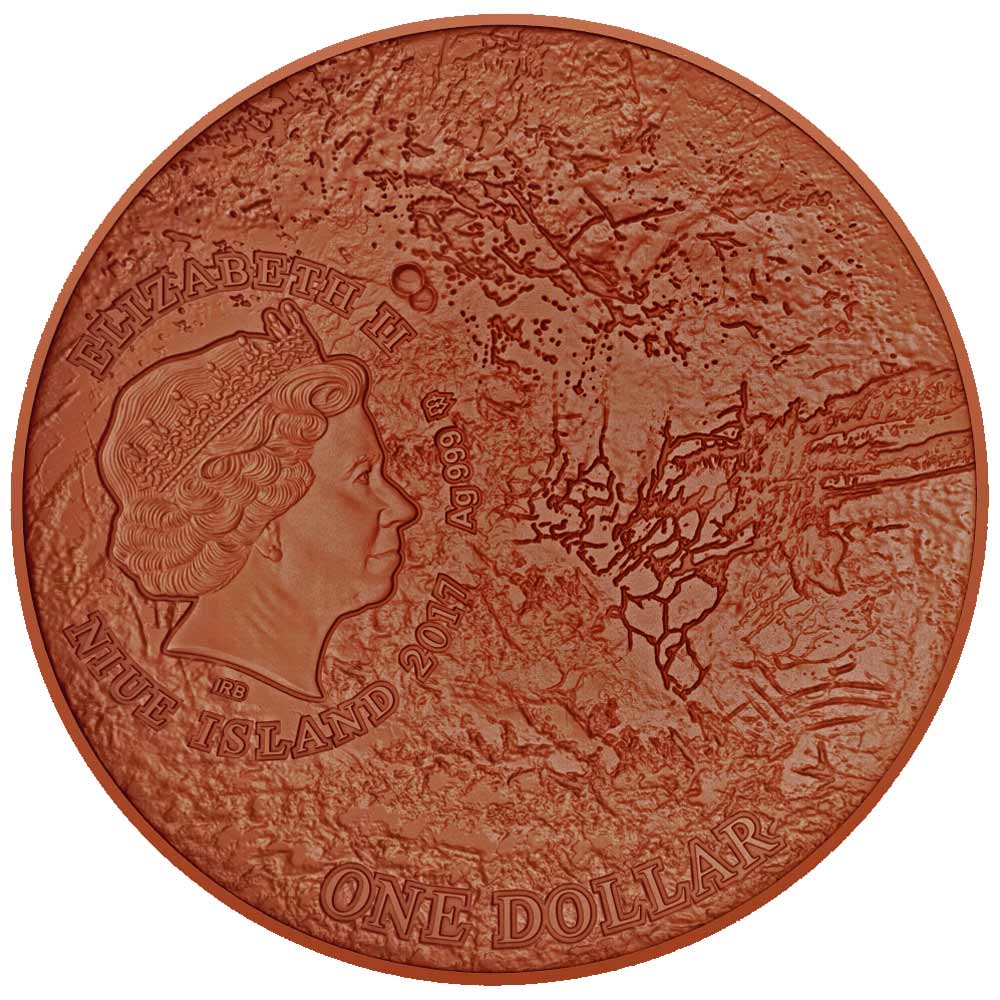
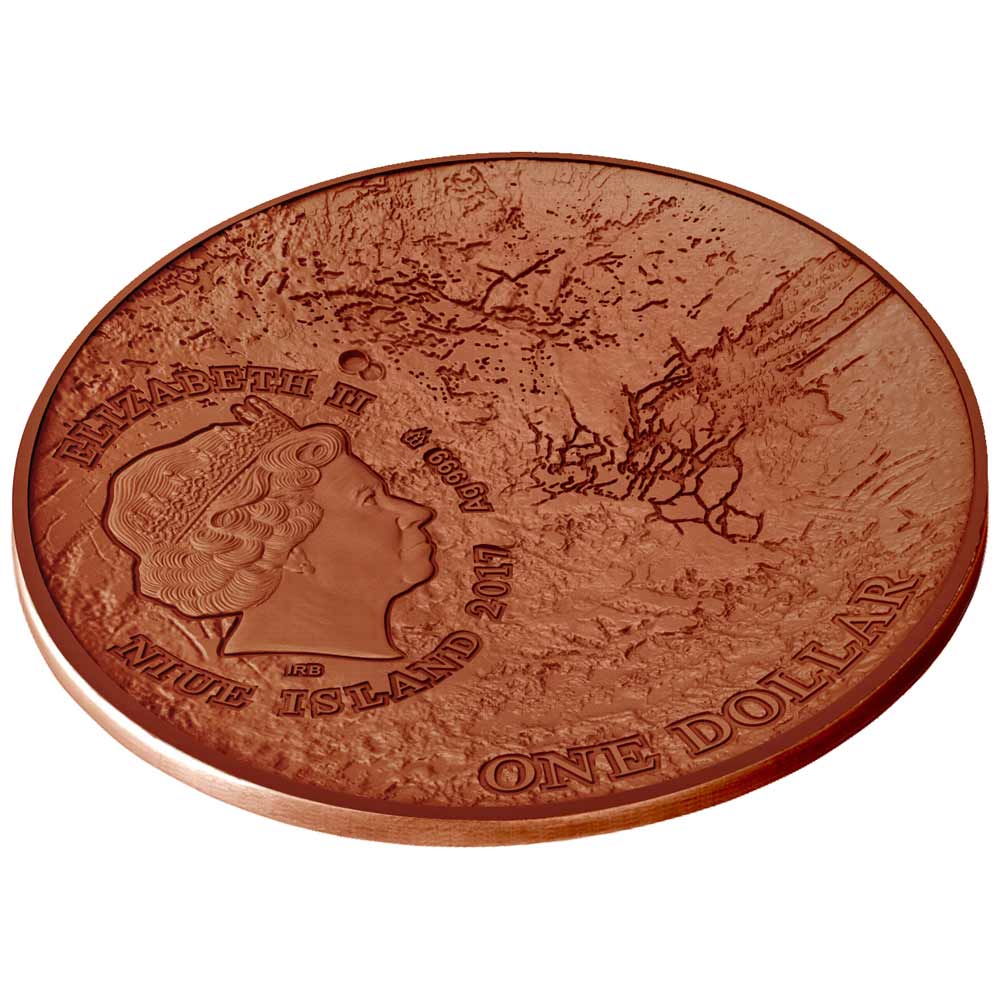
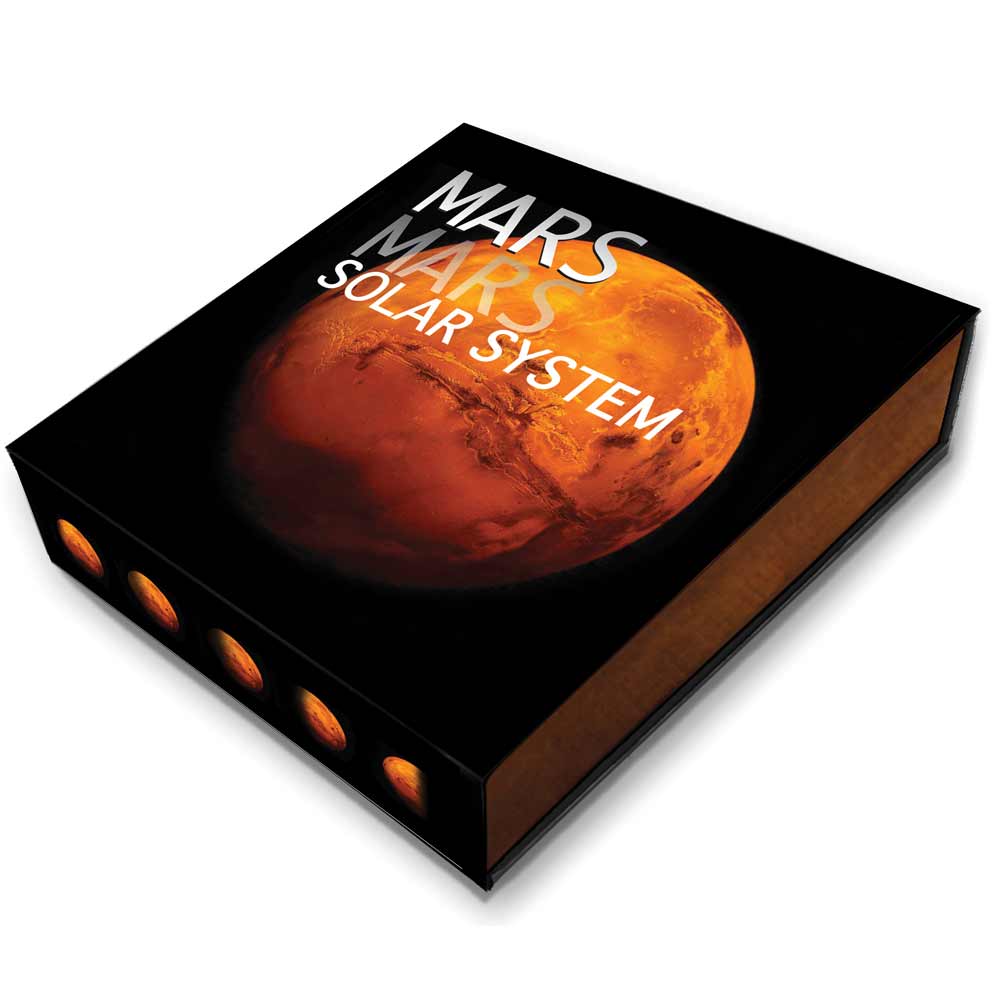


I have been waiting for this one to come out. Thanks for keeping me informed on this series.
I like this series as well. Got the first one but not the second yet. WIll get this one, very cool.
Dear Mik
Where can you pre-order the Mars Solar System coin featured?
Regards
Joan
Hi Joan, Powercoin.have it up at http://www.powercoin.it/en/mennica-polska-poland-mint/2657-mars-nwa-7397-meteorite-solar-system-1-oz-silver-coin-1-niue-2017.html
Thanks Mik, Just ordered one from Powercoin !! Now just to hurry up and wait for it…..
Could you please tell me, if you know so, when the next coin of the solar system series will be on the market and what will be its theme?
Not sure on the theme yet, but these tend to be released in late March/April every year, so we’d not expect that to change.